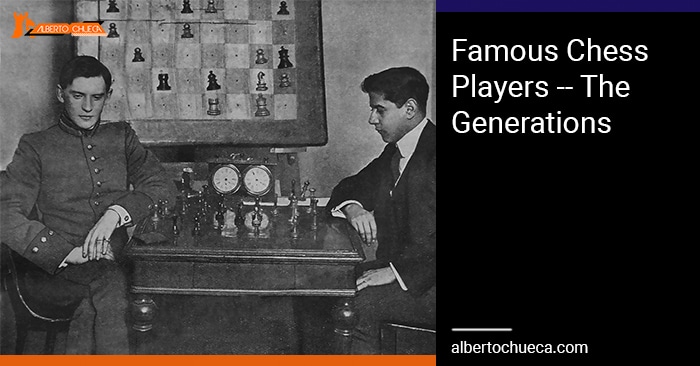Table of Contents
Famous Chess Players – Generations
Chess is such a beautiful game played by millions of people worldwide. Many of us dream to be the best chess player of all time. Out of the many people who play this game, only a handful of them become the world's elite. If you put this into perspective, only 16 chess players have ever become world chess champion. We should treat these famous chess players with the utmost respect. What's very fascinating is that every single World Chess Champion brought something significant to the game of chess. We still play a lot of the principles Paul Morphy, Mikhail Tal, and Magnus Carlsen gave us! Without further ado, let's learn more about these chess players who revolutionized the game of chess.
The first world chess champion – Wilhelm Steinitz
While there had been several “chess champions” before Wilhelm Steinitz, players like Gioachino Greco and Francois-Andre Philidor dominated the 17th and 18th centuries, Steinitz was the first anointed world chess champion.
However, Steinitz was one of the founding fathers of “positional play”. The older players like Paul Morphy were crazy about the romantic sacrifices and picturesque checkmates resulting, while Steinitz, originally a romantic player, helped bring a completely new style of chess to the game that shocked everyone.
We see an instructive example from the Vienna 1873 tournament in which he unleashed several positional concepts:
We see in the position above, Steinitz was playing Black against Adolf Schwartz. Black's sixth move was h6, and White just played Bh4.
As shown in the diagram above, Black unleashed g5, which does open the Kingside but embarrasses the White Bishop.
After a few more moves, Bg3, a6, Qd2, Bg4, Ne2, Qe7, h4, Bxf3, gxf3, Steinitz's positional knowledge starts to show on the board.
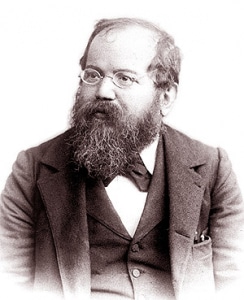
We see above that Black clearly has the upper hand, as the Bishop on g3 is simply horrible, and the doubled pawns do not do a service either.
Famous Chess Players – The Chess Genius, Jose Capablanca
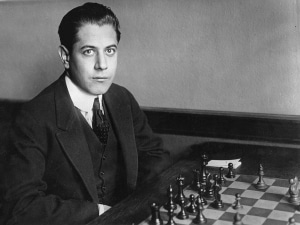
We oftentimes refer to kids, or chess players in general, to being very talented. Jose Raul Capablanca was the true definition of talent.
Capablanca learned to play chess at the age of four and went to chess clubs at age eight.
His parents were advised by a doctor not to let Capablanca pursue chess, because of his obsession with it! Below is just one of many examples of how naturally talented Capablanca was, and why he deserved to be one of the best chess players of all time.
The position you see above, from his game against Charles Jaffe, is from a typical Queen's Gambit Declined opening, any 1400 ELO player could attain this position as White.
It's what Capablanca did with positions like these that made him one of the best chess players ever. Capablanca sees his opportunity to favorably open the position with e4, dxe4, Nxe4, Nxe4, Bxe4.
I would really encourage you to look this game up. White's basic setup was Bc2, b3, Bb2, Qd3, d5, and he got an extremely crushing attack.
We got the above position after 18 moves of play. White to play and win, this is a good puzzle for you if you are approximately 1600 ELO.
White finished Black off with Bxh6, Kxh6, Nxf7+, with Qxg6# coming. Why, Capablanca, do you have to make chess look so easy?!
Famous Chess Players – the aggression is not finished!
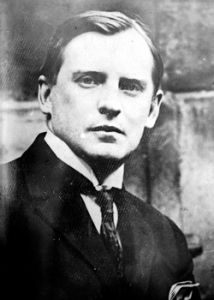
Alexander Alekhine dethroned Capablanca from the world chess championship crown in 1927. Alekhine was known for his interesting habits, including drinking, and he married a lot.
His crazy lifestyle clearly reflected his play. He was notorious for his attacks and sacrifices, bringing back those good old days!
He was also the first and only world champion to die during his reign. Here's a nice combination from his game against Edgar Colle. A good position to solve if you are around 1600 ELO, though precision is necessary!
Alekhine clearly recognizes his strengths in the position and his opponent's weaknesses.
He wins instantly with Qxd7, Rxd7, Re8+, Kh7, Rc8. After Rd8, Rexd8 is necessary (Rcxd8 falls for Qc1+), and Black cannot avoid checkmate.
Famous Chess Players – 1948 to 1972 – The Soviets Dominate
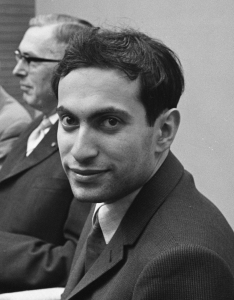
The death of Alexander Alekhine resulted in the rise of chess culture in the Soviet Union that would dominate the world for decades to come.
The World Chess Championship tournament in 1948 determined the next world champion after Alekhine's passing, with Mikhail Botvinnik giving the Soviets their first, and certainly not last world chess championship trophy.
Mikhail Botvinnik and Vassily Smyslov brought positional play, back to the table. The readers would be remiss if we did not mention at least one combination from the legendary Mikhail Tal.
Even the best chess players of all time admire his games! The puzzle below is great for 1600 ELO, though again, accuracy is key!
White seems to be in some trouble if he does not take immediate action, being down of material. Tal played Bxg7, and after Kg8, Bh8!! is simply winning. If Kxh8, Qxh7#. If Kxf7, Qxf6+ will be checkmate.
The Fischer boom of 1972
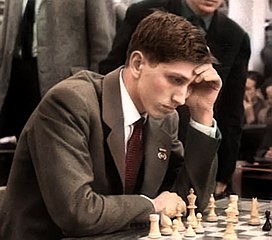
It was August 31st, 1972, when the Russians, in the midst of the cold war, were finally taken down after over two decades of dominance.
American hero Bobby Fischer was set to play Russian world champion Boris Spassky for the world title. Fischer started 0-2 after a notorious Bishop blunder, or perhaps, he was playing too hard for the win. He did not show up for game 2, as he had issues with how the match was organized and threatened to quit.
But he returned, and what a comeback he made, highlighted by game six, when Fischer, a consistent 1. e4 player, played 1. c4. Here's a critical position from the game.
In the position above, Fischer, in the critical moment, played 20. e4! and got an attack he never looked back on. After 20… d4, 21. f4, Qe7 22. d5, Fischer ended up placing his Bishop on c4, Queen on h3, and eventually broke through with f5. Spassky was helpless.
Famous Chess Players — The Russians return to glory
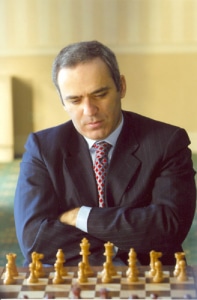
Bobby Fischer was scheduled to play a world championship match against challenger Anatoly Karpov in 1975. Fischer had strong disputes about the match format, and his off the board antics did not help him either.
Therefore, he forfeited the match, and Karpov was declared world champion.
Then, Garry Kasparov, among the best chess players of all time, came on the scene, and we have countless Karpov-Kasparov world championship games in the books.
We all know of the (infamous) match when Karpov started 5-0, but Kasparov strung together 3 wins in a row, then FIDE declared the match over. Kasparov eventually took down a dominant Karpov in 1985, though the two are known in chess history as among the most dominant and famous chess players we have ever experienced.
Here is just one of the many great games of Kasparov and Karpov, among the best chess players of all time.
White is suffering so much! Kasparov is Black and shows no mercy with 21… c4. If White takes the pawn, Qa5 is game over. After 22. Nc1, c3, 22. Nxa2, c2, Black is crushing.
The rest of the story
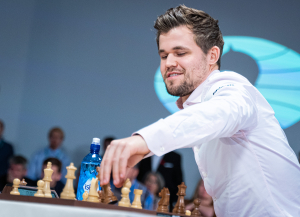
Kasparov was surprisingly taken down by Vladimir Kramnik in 2000, who helped popularize the Berlin Defense, and used to to help defeat world chess champion Kasparov for the world crown.
Kramnik was taken down by Viswanathan Anand, though the legend Anand was defeated by young upcoming Magnus Carlsen, who became one of the best chess players of all time, and the rest is history.
Who will be the next world champion? Who will people be talking about as the chess legends in 100 years from now? Time will tell!

